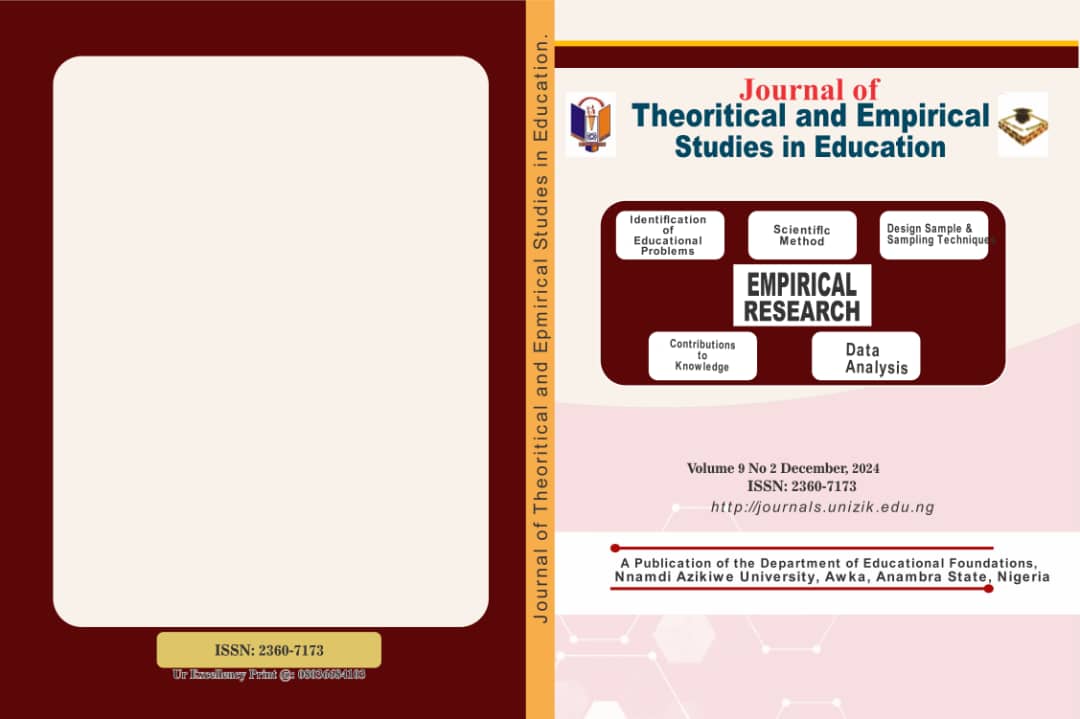INSTRUCTIONAL LEADERSHIP STRATEGIES AND PRINCIPALS' GOAL ATTAINMENT
Keywords:
Instructional Leadership Strategies, classroom visits, enhanced communication, principals’ goal attainment, academic successAbstract
This study examined the impact of instructional leadership strategies, specifically classroom visits and enhanced communication, on principals' goal attainment related to academic success in secondary schools in Edo State, Nigeria. A descriptive survey design was employed, involving 70 participants (teachers and principals) from a total population of 82 across four secondary schools. Data were
collected through questionnaires and analyzed using SPSS version 23. Descriptive statistics revealed high mean scores for classroom visits (4.25), enhanced communication (4.15), and academic success (4.30), indicating a positive perception of these strategies. The standard deviations of 0.75, 0.80, and 0.70, respectively, suggested moderate variability in responses, with the least variation in academic success, indicating consensus on its effectiveness. Pearson correlation analysis showed strong positive relationships among the variables. Classroom visits and enhanced communication had a correlation coefficient of 0.65, while classroom visits and academic success were correlated at 0.70. Enhanced communication showed the highest correlation with academic success
at 0.75, emphasizing its importance in achieving academic goals. The study concludes that both classroom visits and effective communication are vital instructional leadership strategies that significantly contribute to academic success. Recommendations include increasing the frequency of classroom visits for ongoing teacher support and implementing robust communication strategies
to engage stakeholders. Future research should investigate the impact of these strategies on specific subjects and explore the role of technology in enhancing communication and long-term academic outcomes.




